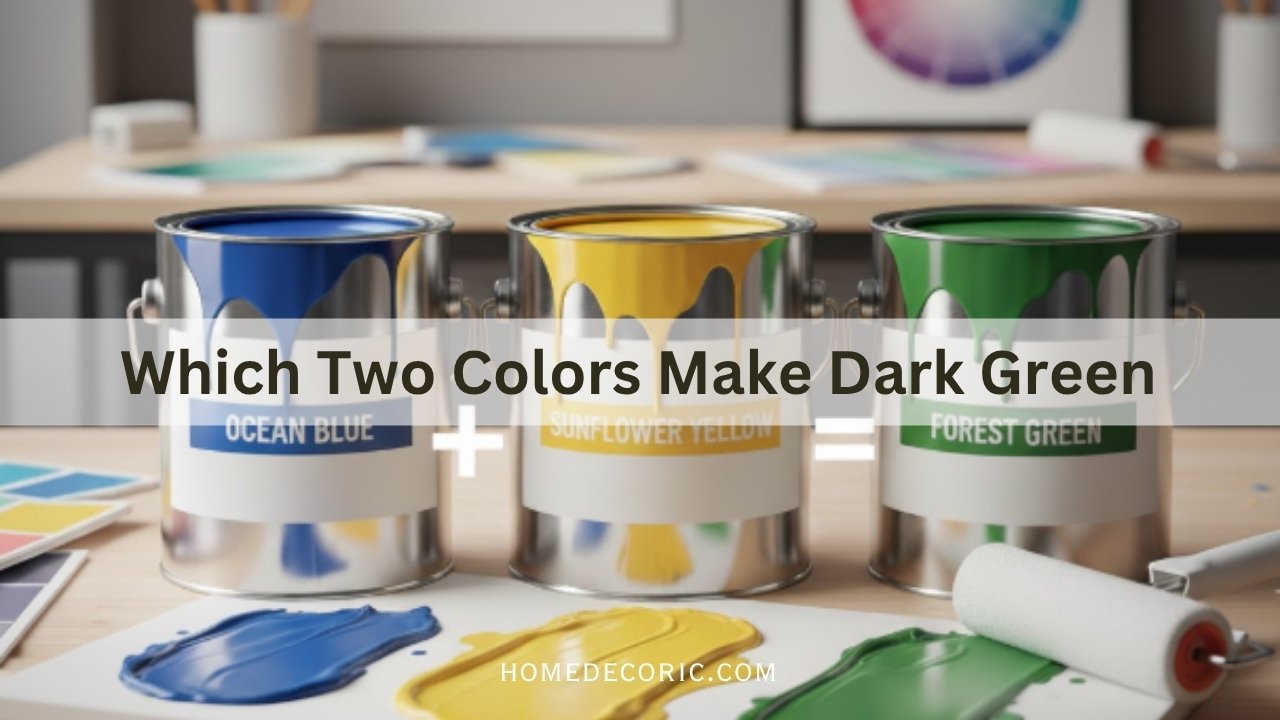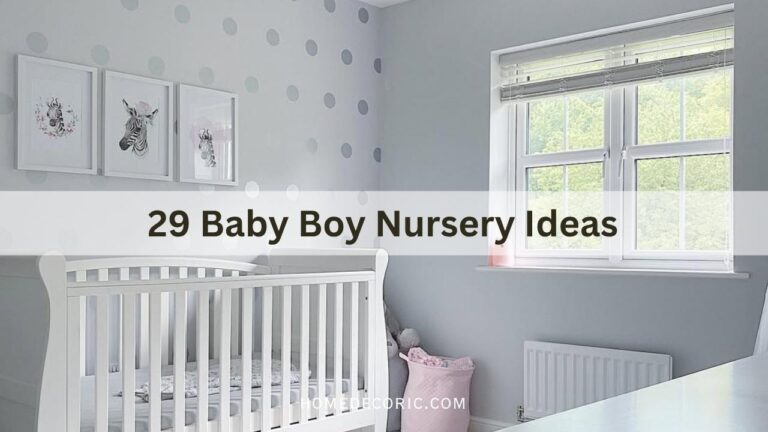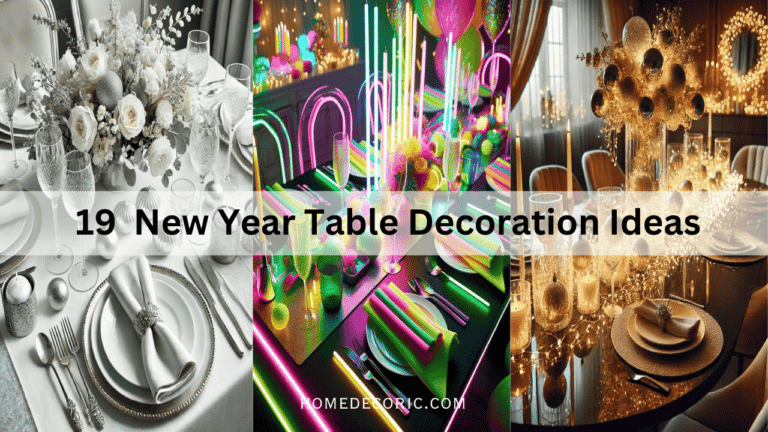Which Two Colors Make Dark Green?
When you want to mix dark green, the magic begins with two simple colors, blue and yellow. But creating the perfect shade of dark green depends on your chosen tones and how you balance them.
Two Colors, One Masterpiece: Crafting the Perfect Dark Green
Let’s explore how to do it correctly, whether you’re painting, designing, or working digitally.
1. The Core Formula: Blue + Yellow = Green
Every green shade starts with blue and yellow. These are your primary colors for producing green tones of all kinds.
However, the blue and yellow you use determine how light or dark your final green becomes.
- For lighter green → use a bright yellow (like lemon yellow) and a cool blue (like sky blue).
- For darker green → use a deep blue (like Prussian or Ultramarine Blue) and a muted yellow (like ochre or mustard).
The two base colors that make green are blue and yellow, but to make it dark, you’ll need a deeper tone of Blue.
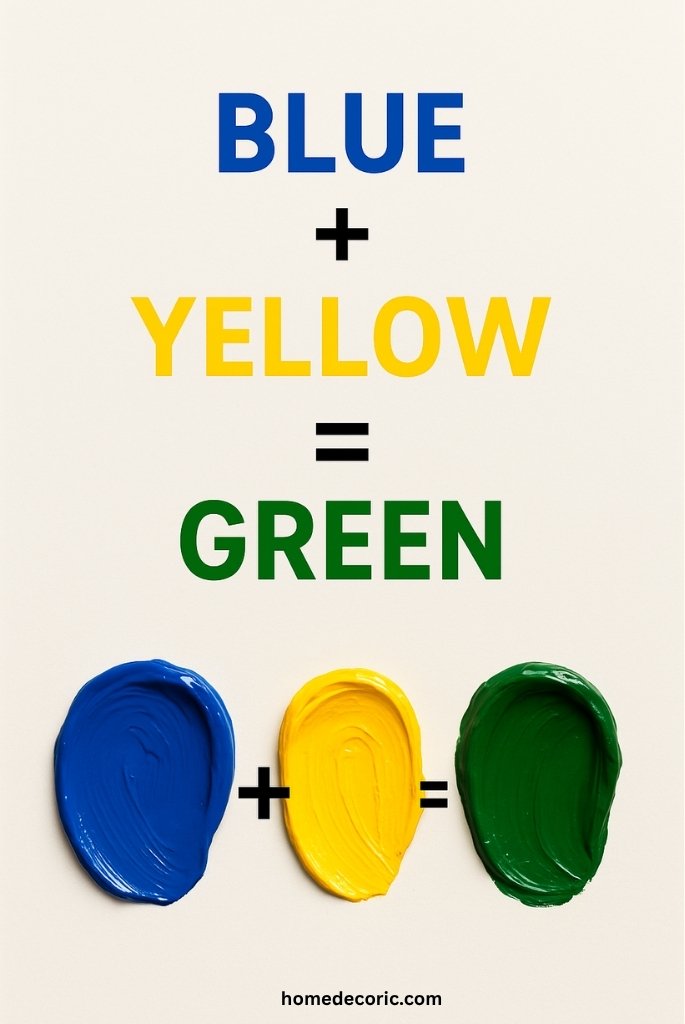
2. Turning Green into Dark Green
Once you mix blue and yellow to form green, darken it by slightly adjusting the tone. Here are the most effective methods:
- Add more blue, which is the easiest and most natural way. Increasing the amount of deep Blue gives you a cooler, richer green.
- Add a touch of black – This darkens the color quickly, but use sparingly to avoid making it muddy.
- Add a hint of purple or brown – This can deepen the shade without dulling it too much, creating a forest or olive-green effect.
A practical two-color mix for a natural dark green is Prussian Blue + Cadmium Yellow. This gives you a deep, earthy tone that feels balanced and rich.
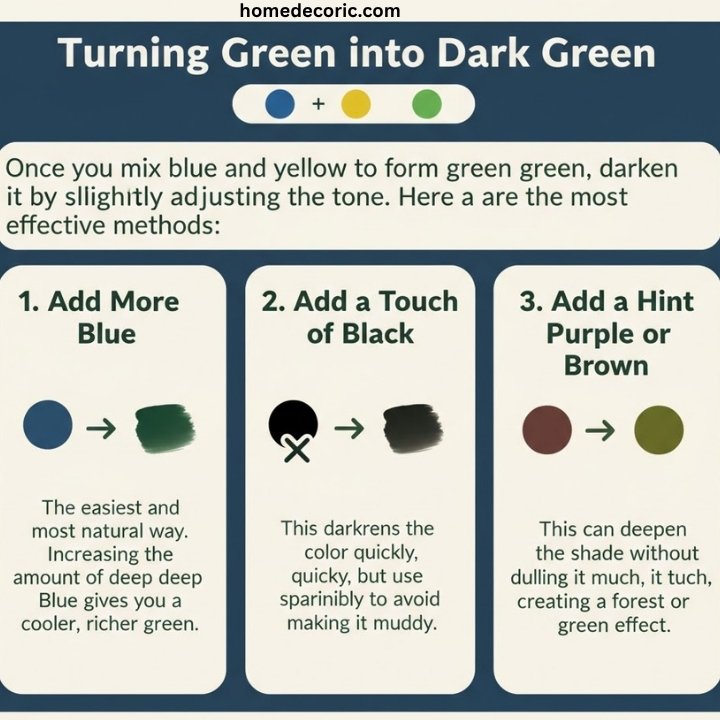
3. Choosing the Right Shades
Here’s a quick guide:
| Desired Result | Blue Type | Yellow Type | Notes |
|---|---|---|---|
| Bright Green | Sky Blue | Lemon Yellow | Fresh, vibrant look |
| Forest Green | Ultramarine Blue | Golden Yellow | Rich and natural |
| Dark Green | Prussian Blue | Mustard Yellow | Deep and cool tone |
| Olive Green | Navy Blue | Yellow Ochre | Muted and earthy |
Remember, darker blues produce darker greens. If you use pale blue, you’ll get pastel greens instead.
4. For Digital Designers
In digital color systems like RGB or HEX, dark green lowers the brightness or increases the black component in your mix.
For example:
- Bright Green (Hex #00FF00) → pure green
- Dark Green (Hex #006400) → lower brightness, deeper tone
So, the concept is the same: reduce light, increase darkness to achieve depth.
5. Quick Recap
To mix dark green, here’s what you do:
- Start with blue and yellow as your base colors.
- Choose a deep blue (like Prussian or Ultramarine).
- Add yellow slowly until you get the right shade.
- Adjust with a bit of black or brown if you need a darker, more natural tone.
Final Formula:
Dark Blue + Yellow = Dark Green
6. Why Understanding This Matters
Knowing how to mix dark green is helpful for more than just art; it’s valuable in design, fashion, interior décor, and branding.
Dark green represents stability, balance, and growth, making it a powerful color for creating calm yet confident visuals.
In Summary
The two colors that give you dark green are:
- Blue (preferably Prussian or Ultramarine)
- Yellow (preferably deep or golden)
Adjust the ratio; more blue makes it deeper, more yellow makes it warmer.
With the right balance, you’ll get a beautiful dark green perfect for any creative project.

